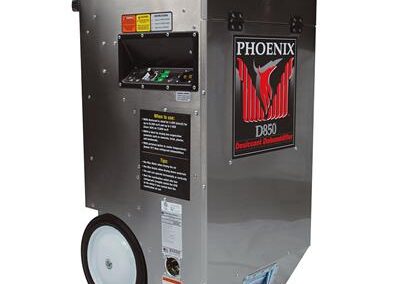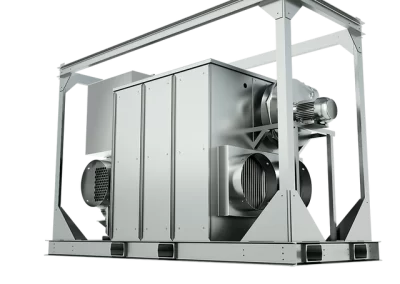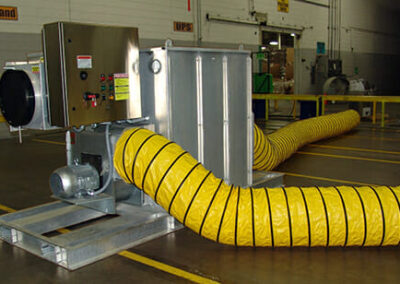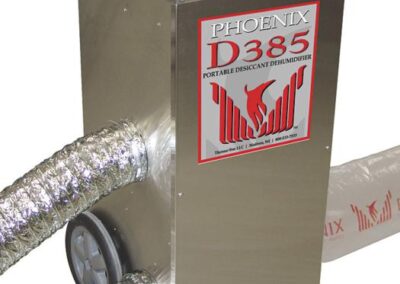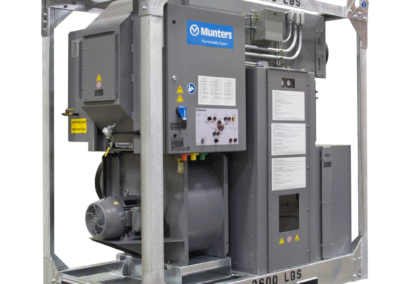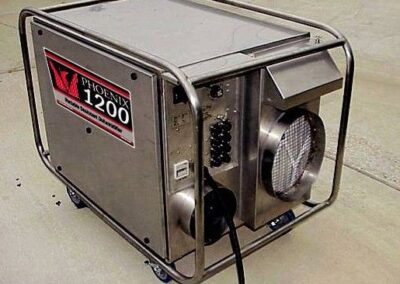Desiccant Dehumidifier
A desiccant dehumidifier is an extremely useful tool in flood and water damage restoration. A desiccant can be the best choice when a project demands very specialized drying or when temperatures are very cold. One of the first things you will notice is that there is no hose and no tanks or buckets with water. A desiccant dehumidifier does not take the moisture out of the air by condensing it on a cold coil like an LGR dehumidifier does. A desiccant collects the water vapor from the air, and expels water vapor, without ever changing it to water. In very cold climates where freezing is possible, collecting liquid water can be challenging, so a desiccant can be the best choice. Its also a great choice for materials that are extremely dense where an LGR may struggle, materials like stone, concrete, hardwood floors are just a few examples of materials that are very dense and best served by a desiccant dehumidifier. Desiccants use a small duct work that directs the moist air outside of the structure. In some cases, especially with very large projects or desiccants, the units are designed to sit outside, and are mounted to a trailer or semi truck and only the dry air is ducted into the structure instead of the smaller units sitting inside and exhausting the moist air outside.
Do’s:
– Always contact your restoration technician immediately if you notice the dehumidifier stops running or shuts off.
– Always contact your restoration technician if you notice a strange noise or smell from the dehumidifier.
– Always make sure that clearance is maintained around the dehumidifier, and that papers, curtains and other items do not get sucked into the air stream of the unit.
– Always make sure that your heating/cooling system along with all windows are kept in the position and settings that your restoration technician has approved.
Don’t:
– Never move, unplug or turn off a dehumidifier without speaking to your restoration technician first.
– Never allow children or pets near a working dehumidifier.
– Never allow the ductwork to get crimped or collasped
– Never unplug the dehumidifier or switch outlets without first discussing with your restoration technician
– Never remove the dehumidifier from the location where it was placed, and never turn it to point another direction than it was placed without first contacting your restoration technician.
– Never turn the dehumidifier off because of night-time conditions or because the house is too warm.
Interesting Facts:
– The desiccant dehumidifier was invented in 1951 by Carl Munter, who’s company is still in business producing restoration equipment today. Check out his story:
https://www.munters.com/en/about-us/history-of-munters/history-news2/munters-desiccant-rotor–
industrial-dehumidification-at-its-best/
– Desiccant dehumidifiers contain no freon or refrigerant, and run on silica gel, the same material
inside those small packets in your new pair of shoes.

